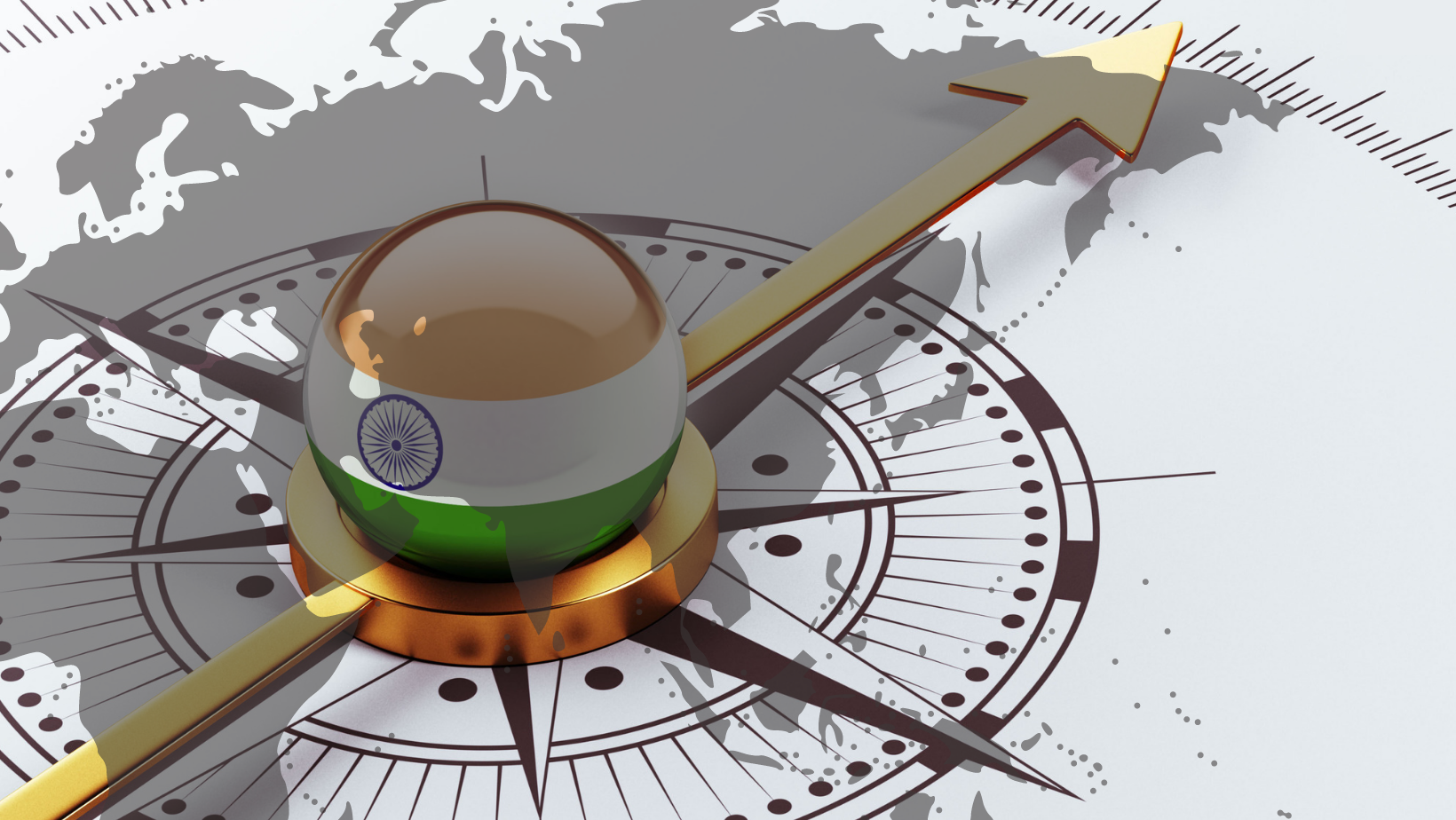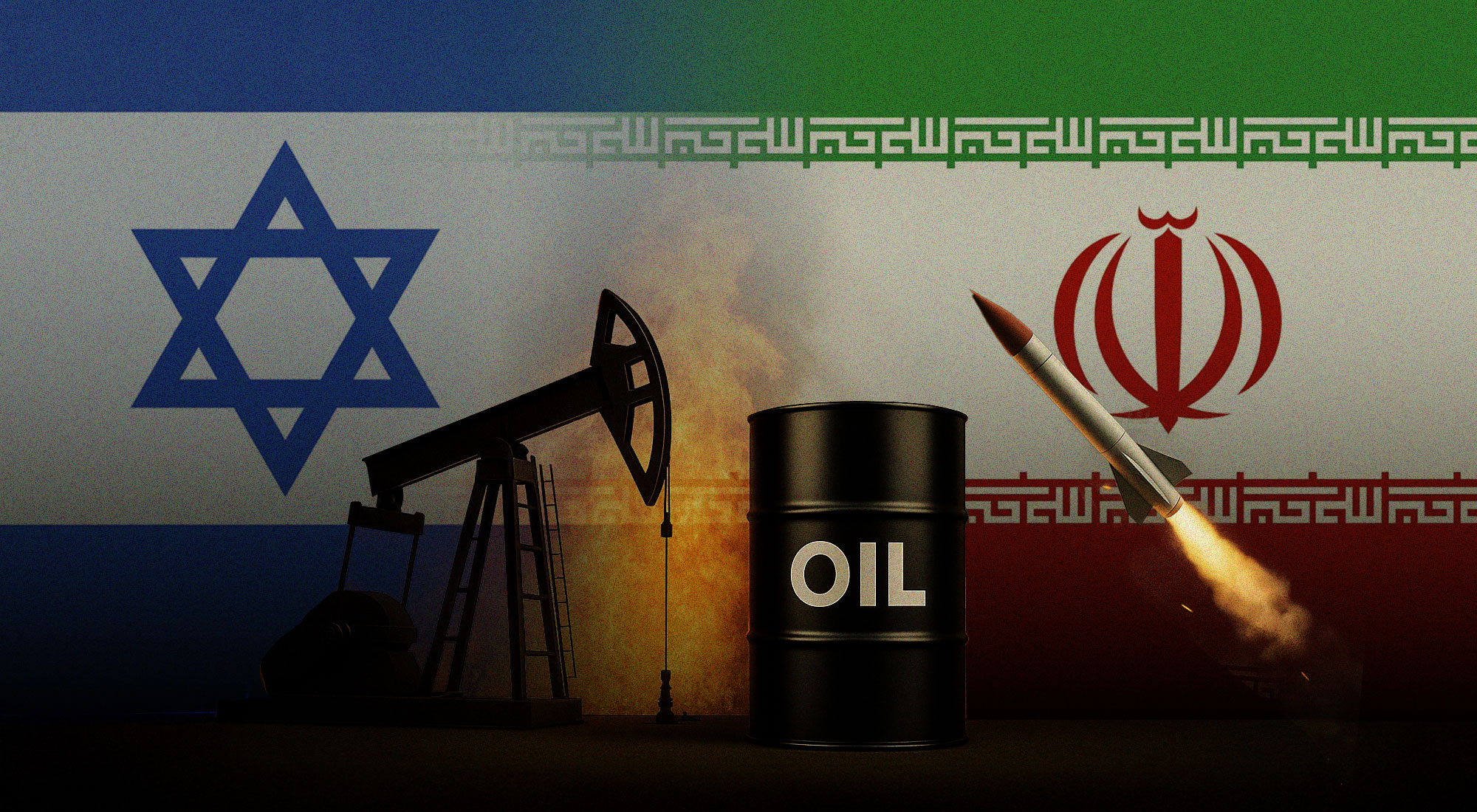In his oft-cited book, The Post-American World, Fareed Zakaria boldly envisioned India as the ultimate pivot state in 21st century geopolitics – a vibrant and democratic nation that is no longer shackled by its ‘non-aligned’ traditions, but instead potentially ‘the ally’ of the West in an era of Sino-Russian resurgence.[1] On his part, Robert Kaplan has argued that India is bound to become an independent pillar in an emerging concert of powers across the Indo-Pacific, along with the United States and China.[2] Former Japanese Prime Minister Shinzo Abe, meanwhile, actively courted India as a pillar of the Indo-Pacific, paving the way for New Delhi’s emergence as a key member of the much-vaunted Quadrilateral Security Dialogue, better known as the ”Quad”, along with Australia, Japan and the US.[3]
To be fair, widespread strategic optimism towards India’s growing international role is grounded in some fundamental shifts in the global balance of power. Thanks to decades of above-average growth rate,[4] India recently managed to, in a highly symbolic moment, surpass its former colonial master, the United Kingdom, in terms of Gross Domestic Product (GDP), thus becoming the world’s fifth largest economy just behind Germany, Japan, China and the US.[5] Over the coming decades, India is poised to regain its pre-colonial era status as the world’s second largest economy, just behind China.[6] Its sizeable economy has also translated into military power, with India rapidly modernizing its armed forces with the world’s largest defense budget, which reached almost $73 billion in recent years.[7]
Crucially, India is also fortifying its strategic depth, emerging as a major source of development aid, and more recently COVID-19 vaccines, across South Asia, with Nepal, Bhutan, Maldives, and Sri Lanka among its largest beneficiaries.[8] Up to two-thirds (64 percent) of India’s Ministry of External Affairs budget is spent on international development initiatives, including the International Technical and Economic Cooperation (ITEC) program. But, as Hudson Institute’s Aparna Pande notes, “South Asia is not the only region where India seeks to expand its influence.”[9] In particular, India has laid its gaze on Southeast Asia, which is home to some of the world’s most dynamic economies as well as a new theatre of great power competition.
In what has been described as “the most significant exposition of its ‘Act East’ policy,” New Delhi invited all Southeast Asian heads of state as the country’s chief guests during its 69th Republic Day parade in 2018.[10] Not long after, India not only signed major investment agreements with Southeast Asian counterparts, but also kickstarted negotiations over major defense deals. This year, India and the Philippines finalized the much-ballyhooed US$375 million BrahMos supersonic cruise missile deal, a landmark agreement that paves the way for robust defense and strategic partnerships between New Delhi and key Southeast Asian states. By all indications, India’s “Act East” policy, which aims to strengthen New Delhi’s strategic presence in East Asia as well as counter China’s growing influence in the Indo-Pacific, is now in full force.
Non-aligned isolation
Following its independence, India, under former Indian Prime Minister Jawaharlal Nehru, actively pursued a “non-aligned” foreign policy, which rejected any formal alliance with either the West or the Soviet Union. If anything, the Indian leader tried to forge a common cause not only with like-minded post-colonial nations such as Egypt or Indonesia, but also with China, which was also victimized by colonial powers throughout the early-modern era. To this end, Nehru and Chinese Premiere Zhou Enlai projected a common front at the Bandung Conference (1955), which launched the global Non-Aligned Movement (NAM) among so-called “Third World” nations.[11]
In order to win over Maoist China, which was initially excluded from the United Nations in favor of Taipei-based Republic of China (ROC), Nehru reportedly even turned down an offer for India to become a permanent, veto-bearing member of the United Nations Security Council (UNSC). The Sino-Soviet split, which emboldened China to take a more independent position internationally, further reinforced the logic behind Nehru’s strategic outreach. All fell apart, however, following the 1962 border war in the Himalayas between the two giant neighbors, catching the Indian leader by surprise. In response, an outraged Nehru accused Beijing of “invading a friendly country without rhyme or reason or excuse and justifying it by saying that they are being attacked.”[12]
To India’s chagrin, the US forged a strategic partnership with India’s archrival Pakistan, which became a major ally against Soviet forces in Afghanistan. Hemmed in by China and Pakistan, which have established a de facto alliance in recent decades, India sought military and strategic support from Moscow, which continues to serve as a major source of military hardware to the South Asian powerhouse. Its relative isolation during the Cold War period deeply shaped India’s strategic orientation, which remained largely insular, defensive, and even suspicious towards the West. The US’ early reluctance to back India’s civilian nuclear technology only reinforced India’s strategic reservations towards the West.[13]
The end of the Cold War, and India’s subsequent embrace of market capitalism in the 1990s and early-2000s, did not significantly reshape New Delhi’s ‘non-aligned’ foreign policy tradition. This largely explains why India politely demurred from the iterations of the Quad in the mid-2000s in favor of cultivating warmer economic ties with neighboring China.[14] Upon ascending to power, even Indian Prime Minister Narendra Modi, known for his more assertive and nationalist ideological bent, sought to deepen strategic ties with Beijing, a potential source of large-scale investments.
A new India
Chinese President Xi Jinping’s high-profile visit (2014) to Modi’s home state of Gujarat, however, coincided with reports of unilateral actions by Chinese troops along the two countries’ disputed borders, also known as Line of Actual Control (LAC). Modi’s subsequent visit to China – where he visited Xi’s home province of Shaanxi and even took a ‘selfie’ picture with Chinese leaders – largely failed to either unleash a new wave of Chinese investments or dampen rising tensions in the disputed Himalayan borders.[15]
If anything, recent years have seen rising border tensions, including deadly skirmishes, between the two Asian powers.[16] Meanwhile, China has been expanding its investment footprint across South Asia, naval deployments across the Indian Ocean, and large-scale military and infrastructure assistance to Pakistan. Decades earlier, a high-level Chinese military official declared: “We can no longer accept the Indian Ocean as only an ocean of the Indians.”[17] Meanwhile, prominent Chinese strategist, Zhang Ming, once described India as “perhaps China’s most realistic strategic adversary.”[18]
In response, India is doubling down on its own “Act East” policy, while warming up to more robust defense and strategic ties with the West and Japan. As leading Indian strategic thinker Brahma Chellaney told the author, “the main driver” behind India’s strategic reorientation in recent years is the perception that China is not only “encroach[ing] on India’s maritime backyard”, but also overseeing the South Asian power’s “strategic encirclement” through development of intimate strategic ties with Pakistan and Sri Lanka.[19]
For leading experts such as Dhruva Jaishankar, India had begun effectively abandoning its non-aligned foreign policy tradition: “For all intents and purposes, non-alignment is not just over, but it is not particularly useful or applicable in today’s context.”[20] Growing concerns over a resurgent China, and a deepening sense of self-assuredness, steadily made New Delhi more receptive to overtures by the US and key Asian allies. In an influential essay entitled “Asia’s Democratic Security Diamond”, Japanese Prime Minister Shinzo Abe envisioned an alliance of democracies, which would jointly uphold “peace, stability, and freedom of navigation” across both the Indian and Pacific Oceans, which he described as “inseparable”.[21]
The Japanese leader saw India, the world’s largest democracy, as a key member of this emerging alliance. In his 2007 speech before the Indian Parliament, titled “Confluence of the Two Seas”, Abe invoked a “broader Asia” and underscored the “dynamic coupling” between the two vast oceans as “seas of freedom and of prosperity”. Abe’s “Indo-Pacific” paradigm, and India’s centrality in this new geopolitical cartography, was largely embraced by former U.S. Admiral Harry Harris, who repeatedly and famously spoke of the centrality of a singular geopolitical unit extending from the “Hollywood to Bollywood”. Contemplating a new era of “great power rivalry” with China, the Trump administration wholeheartedly embraced Abe’s Indo-Pacific vision as the centerpiece of its policy in Asia, which prioritized, inter alia, the cultivation of robust strategic and defense ties with a rising India.[22]
But as Australian National University academic William Tow explains, “India’s level of enthusiasm for anything more than a soft coalition of democracies, deliberating on broad Indo-Pacific security issues, will continue to be tempered by its residual instincts favoring a non-alignment posture,” especially since New Delhi has “no great desire to alienate China unnecessarily, and believes that it can deal with China more effectively on a bilateral rather than a minilateral basis.”[23]
During the 2022 Munich Security Conference, no less than India’s External Affairs Minister S Jaishankar told the author that his country largely views Quad as a “a natural [partnership]… [whereby] four countries which have common interests, common values, and a great degree of [diplomatic] comfort” work on issues of common concerns, since “no [single] country, not even the US, today has the ability to address the big global challenges.” [24] In short, India has still ruled out a full alignment with other Quad powers, namely Australia, the US and Japan, which also happen to be treaty allies.
The pivot to Southeast Asia
The greatest expression of India’s renewed strategic confidence is its quiet yet consequential pivot to Southeast Asia. Historically, New Delhi has had a tempestuous relationship with the region, especially Indonesia, the cradle of the NAM movement. In the early post-colonial period, Nehru emphasized the shared histories and a geopolitical vision, which emphasized “a common nationality for India and all these regions of South-east Asia.”[25]
But his hopes for an alliance of non-aligned nations with Indonesia’s Sukarno disintegrated as soon as the latter launched its “Konfrontasi” war against the newly-created Malaysian Federation, which then also included Singapore. Frustrated by the fraternal conflicts in the region, and the pro-American tilt of archipelagic Southeast Asian states towards the latter of the 20th century, Nehru went so far as dismissing them as “Coca-Cola Governments”, which lacked both ideological conviction and strategic autonomy.[26]
Thus, India’s relatively marginal role in Southeast Asia, especially compared to other major powers of the US, China and Japan, would persist well into the 21st century. But the 2018 India-ASEAN Commemorative Summit, under the theme “Shared Values, Common Destiny”, marked a decisive shift in bilateral relations on all key fronts. With bilateral trade steadily increasing to $71.6 billion in the mid-2010s,[27] India began to explore ways to rapidly expand trade and investment relations with ASEAN nations. During the summit, Modi held cordial meetings with key Southeast Asian leaders, including Filipino President Rodrigo Duterte, who welcomed expanded economic ties with the South Asian powerhouse. Consequently, the two sides discussed $1.25 billion worth of bilateral investment pledges, cutting across key sectors such as telecommunications, transportation and the pharmaceutical industry.[28]
Yet, the summit was not just confined to economic issues, with India discussing maritime security and defense cooperation with ASEAN nations.[29] In the joint India-ASEAN statement, dubbed as the “Delhi Declaration”,[30] both sides reaffirmed their commitment to “maintaining and promoting peace, stability, maritime safety and security, freedom of navigation and overflight in the region, and other lawful uses of the seas.” They also discussed the South China Sea disputes and the need for a rules-based management and resolution of the disputes.[31]
The South China Sea disputes were reportedly discussed during an off-the-record ‘retreat’ among Indian and ASEAN state leaders.[32] New Delhi has shown its growing interest in the area by deploying a naval contingent to the disputed area last year, with Indian warships making goodwill port calls as well as conducting joint military exercises with Indonesia (Samudra Shakti), Australia (AUS-INDEX), and Singapore (SIMBEX), in addition to Vietnam and the Philippines. India has pursued major defense deals with ASEAN counterparts.[33]
Under the Modi administration, India is seeking to transform its import-dependent industria-military complex by expanding joint ventures with major powers such as France, Japan and Russia, and by increasing the country’s military hardware exports to $5 billion by 2024. Ultimately, India seeks to transform into a leading supplier of affordable yet high-quality defense equipment to fellow developing countries. To this end, India and the Philippines, a key US ally, began negotiating the sale of the much-vaunted BrahMos supersonic cruise missiles.[34]
When India reconsidered arms exports, most notably the sale of the Prithvi surface-to-surface short-range ballistic missile to Vietnam, in order to avoid strategic frictions with China, this marked a major departure from India’s generally diffident defense policy in the region in the past. India’s current pivot to the region has coincided with steady arms build-up across Southeast Asia, as regional states hedge their bets amid rising Sino-American rivalry as well as festering disputes in East Asia.[35]
Following the finalization of the BrahMos defense deal with India, Philippine Defense Secretary Delfin Lorenzana bluntly said: “Equipping our navy with this vital asset is imperative as the Philippines continues to protect the integrity of its territory and defend its national interests.”[36] It goes without saying that the sale of a few supersonic missile batteries, a product of Russo-Indian military cooperation, is unlikely to alter the military balance of power in the region.
But as BrahMos Aerospace chief Atul Dinkar Rane made it clear, that landmark agreement with the Philippines “paves the way for many more to come,” since the “deal opens the doors for all defense equipment [made] in India, not just the BrahMos but all the other systems which we are making.” To begin with, the Philippines will likely pursue the purchase of the even more sophisticated Brahmos II hypersonic missile, which could significantly improve the Southeast Asian country’s ‘minimum deterrence’ capabilities.[37]
Moreover, New Delhi is also pursuing similar defense export packages to Vietnam, which has had robust defense ties with both India and Russia, as well as Indonesia, in the midst of a $125 billion military modernization program. In short, the BrahMos deal with the Philippines marks the first step in a new era of Indian defense and strategic policy in the region. By and large, India’s “Act East Policy” is now in full force, with Southeast Asian states emerging as enthusiastic economic partners as well as potential defense customers.
References
[1] Fareed Zakaria, The Post-American World (New York: W.W. Norton & Company, 2008).
[2] Robert Kaplan, The Revenge of Geography: What the Map Tells Us About Coming Conflicts and the Battle Against Fate (New York: Penguin Random House, 2013); Robert D. Kaplan, “Center Stage for the Twenty-First Century: Power Plays in the Indian Ocean,” Foreign Affairs 88, no. 2 (2009): 16–32, http://www.jstor.org/stable/20699491.
[3] Tanvi Madan, “The Rise, Fall and Rebirth of the ‘Quad’,” War on the Rocks, November 16, 2017, https://warontherocks.com/2017/11/rise-fall-rebirth-quad/.
[4] See https://tradingeconomics.com/india/indicators.
[5] Hamsh McRae, “This Year, India Will Surpass the UK to Be the Fifth Largest Economy – But We Shouldn’t Worry Too Much,” Independent, March 10, 2018, https://www.independent.co.uk/voices/uk-economy-india-china-g7-g20-industrial-revolution-western-technology-a8248341.html.
[6] Access full report here: https://www.pwc.com/gx/en/issues/economy/the-world-in-2050.html.
[7] See SIPRI report here: https://sipri.org/sites/default/files/2021-04/fs_2104_milex_0.pdf.
[8] D.P. Satish, “India Wins Maldives and Sri Lanka Back, Corners China.” Multidimension, December 18, 2018, https://multidimensionmagazine.com/india-wins-maldives-and-sri-lanka-back-corners-china/.
[9] Aparna Pande, From Chanakya to Modi: Evolution of India’s Foreign Polic (New Delhi: HarperCollins, 2018), p. 164.
[10] Sachin Parashar, “India to Invite Heads of 10 Asean Nations for Republic Day Celebrations,” Times of India, January 25, 2018, https://timesofindia.indiatimes.com/india/india-to-invite-heads-of-10-asean-nations-for-republic-day-celebtations/articleshow/59497883.cms.
[11] Vijay Prashad, The Poorer Nations: A Possible History of the Global South (New York: Verso Books, 2014).
[12] Bobbeeta Sharma, “How Jawaharlal Nehru’s 1962 Speech Was Deliberately Misinterpreted to Mislead Assam,” The Wire, November 14, 2020, https://thewire.in/history/jawaharlal-nehru-birthday-1962-china-speech-assam.
[13] See Nicholas Burns, “Passage to India: What Washington Can Do to Revive Relations With New Delhi,” Foreign Affairs, September/October 2014, https://www.hks.harvard.edu/publications/passage-india-what-washington-can-do-revive-relations-new-delhi.
[14] Tanvi Madan, “The Rise, Fall and Rebirth of the ‘Quad’,” War on the Rocks, November 16, 2017, https://warontherocks.com/2017/11/rise-fall-rebirth-quad/.
[15] Richard Javad Heydarian, “India vs China: Clash of the Titans,” Aljazeera English, August 21, 2017, https://www.aljazeera.com/opinions/2017/8/21/india-vs-china-clash-of-the-titans.
[16] Eric Bellman and Rajesh Roy, “India-China Border Tensions: What You Need to Know,” The Wall Street Journal. January 25, 2021, https://www.wsj.com/articles/india-china-himalaya-border-conflict-11592329619.
[17] Robert Kaplan, Monsoon: The Indian Ocean and the Future of American Power (New York: Random House Trade Paperbacks, 2011).
[18] David Scott, “The Great Power ‘Great Game’ between India and China: ‘The Logic of Geography’,” Geopolitics 13, no. 1 (2008): 1-26, https://www.tandfonline.com/doi/full/10.1080/14650040701783243.
[19] Author interview with Brahma Chellaney, October 6, 2019.
[20] Author interview with Dhruva Jaishankar, October 22, 2019.
[21] Richard Javad Heydarian, The Indo-Pacific: Trump, China and the New Struggle for Global Mastery (Singapore: Palgrave Macmillan, 2020).
[22] Ibid.
[23] Author interview with William Tow, October 30, 2018.
[24] See footage of the full panel discussion and Q&A exchanges here: https://www.youtube.com/watch?v=lSzH0EWGh_0
[25] Sunanda K. Datta-Ray, In Looking East to Look West: Lee Kuan Yew’s Mission India (Singapore: ISEAS–Yusof Ishak Institute, 2009): 73-100.
[26] Ibid.
[27] Surojit Gupta, “Indo-Asean Trade Rises 10% to $72bn in FY17, But Is Long Way off Potential,” Times of India, January 26, 2018, https://timesofindia.indiatimes.com/business/india-business/indo-asean-trade-rises-10-to-72bn-in-fy17-but-is-long-way-off-potential/articleshow/62657555.cms/.
[28] Alexis Romero, “Philippines Secures $1.25-B Investments from India,” Philstar, January 26, 2018, https://www.philstar.com/headlines/2018/01/26/1781449/philippines-secures-125-b-investments-india.
[29] Kallol Bhattacherjee, “India-ASEAN Ties to Focus on Freedom of Navigation,” The Hindu, January 26, 2018, https://www.thehindu.com/todays-paper/india-asean-ties-to-focus-on-freedom-of-navigation/article22526632.ece.
[30] FE Online, “Full Text of Delhi Declaration of ASEAN-India Commemorative Summit to Mark 25th Anniversary of ASEAN-India Relations,” Financial Express. January 26, 2018, https://www.financialexpress.com/india-news/full-text-of-delhi-declaration-of-asean-india-commemorative-summit-to-mark-25th-anniversary-of-asean-india-relations/1030898/.
[31] Abhijit Singh, “India’s ‘Act-East’ Must Satisfy ASEAN Expectations,” Observer Research Foundation, January 24, 2018, https://www.orfonline.org/expert-speak/indias-act-east-must-satisfy-asean-expectations/.
[32] Ibid.
[33] “Indian Navy to Deploy 4 Warships in South China Sea for 2 Months,” ANI News, August 3, 2021, https://www.aninews.in/news/world/asia/indian-navy-to-deploy-4-warships-in-south-china-sea-for-2-months20210803174329/.
[34] Rajat Pandit, “India’s Weapon Imports Fell by 33% in Last Five Years But Remains World’s Second-Largest Arms Importer,” The Times of India, March 16, 2021, https://timesofindia.indiatimes.com/india/indias-weapon-imports-fell-by-33-in-last-five-years-but-remains-worlds-second-largest-arms-importer/articleshow/81516403.cms.
[35] Rahul Bedi, “Four Years After Modi’s ‘Act East’ Promise, India No Closer to Selling BrahMos to Vietnam,” The Wire, July 2, 2020, https://thewire.in/security/india-vietnam-brahmos-missile.
[36] Dexter Cabalza, “PH Navy Acquires Supersonic Missiles from India,” Inquirer.net, January 29, 2022,
https://globalnation.inquirer.net/202007/ph-navy-acquires-supersonic-missiles-from-india.
[37] Rezaul Laskar, “India, Philippines Sign $375-Million BrahMos Missile Deal,” Hindustan Times. January 28, 2022, https://www.hindustantimes.com/india-news/india-philippines-sign-375-million-brahmos-missile-deal-101643392444656.html.








